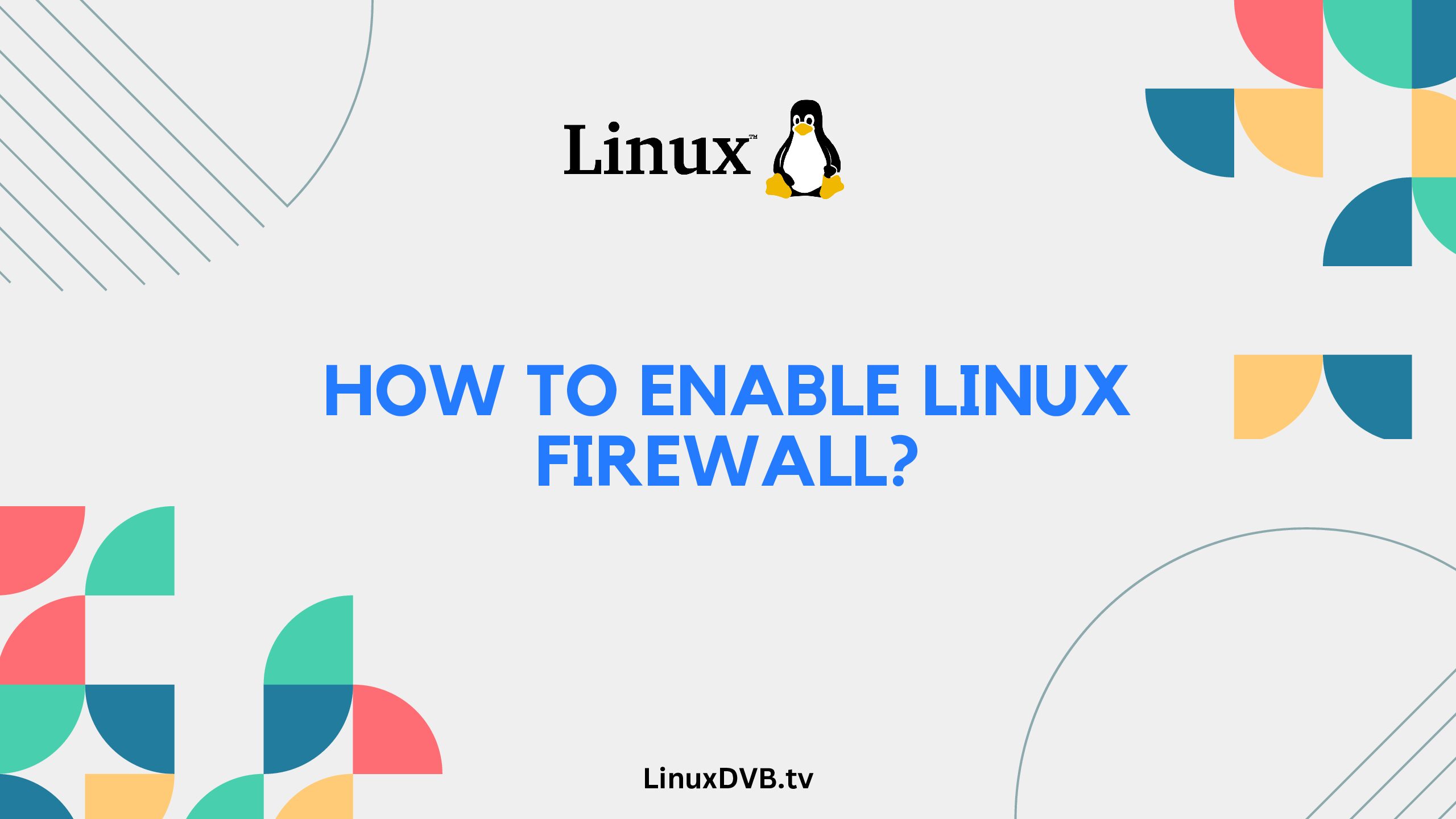Introduction
In today’s digital landscape, securing your computer is of paramount importance. One powerful tool in your cybersecurity arsenal is the Linux firewall. By enabling the Linux firewall, you can safeguard your system from potential threats and unauthorized access. In this guide, we will walk you through the process of enabling the Linux firewall, providing you with expert advice, first-hand knowledge, and valuable insights to enhance your system’s security.
Table of Contents
How to Enable Linux Firewall?
The process of enabling the Linux firewall is relatively straightforward and can greatly enhance your system’s security. To get started, follow these steps:
Accessing the Terminal: Open your Linux terminal. You can do this by pressing Ctrl + Alt + T or searching for “Terminal” in your applications.
Check Firewall Status: Before enabling the firewall, it’s a good practice to check its current status. Enter the following command in the terminal:luaCopy codesudo ufw status This command will display whether the firewall is active or inactive.
Enabling the Firewall: If the firewall is inactive, you can enable it using the following command:bashCopy codesudo ufw enable This command activates the firewall and starts protecting your system.
Configuring Firewall Rules: Once the firewall is enabled, you can start configuring its rules to allow or deny specific types of traffic. For example, to allow SSH connections, use the command:Copy codesudo ufw allow ssh You can also specify port numbers and protocols for more granular control.
Enabling Logging: Enabling logging helps you keep track of firewall activities. Use the command below to enable logging:csharpCopy codesudo ufw logging on This will provide you with valuable information about blocked and allowed connections.
Checking Rules: To see a list of all your configured rules, run:luaCopy codesudo ufw status This will display a list of rules, their statuses, and the applications they’re associated with.
Disabling the Firewall: If you ever need to disable the firewall, use the command:bashCopy codesudo ufw disable However, it’s recommended to keep the firewall enabled for enhanced security.
By following these steps, you can enable the Linux firewall and take a significant step towards safeguarding your system against potential threats.
Why Should You Enable the Linux Firewall?
Enabling the Linux firewall offers several key benefits that contribute to your system’s security and peace of mind:
- Unauthorized Access Prevention: The firewall acts as a barrier between your system and unauthorized external entities, thwarting potential breaches.
- Network Protection: It safeguards your network connections, ensuring that only trusted applications and services can communicate with your system.
- Application-Specific Rules: You can configure the firewall to allow or deny access to specific applications, preventing potentially malicious software from gaining entry.
- Logging for Analysis: Enabling firewall logging allows you to review connection attempts, helping you identify and mitigate suspicious activities.
- Peace of Mind: With the firewall active, you can use your system with confidence, knowing that your data and privacy are being protected.
Expert Tips for Optimizing Firewall Settings
- Regular Updates: Keep your firewall rules updated to account for new services or applications you install.
- Default Deny: Follow the “default deny” principle, meaning deny all incoming connections by default and only allow what’s necessary.
- Limit Outbound Traffic: Consider restricting outbound traffic to minimize the potential for data exfiltration.
- Use Strong Passwords: Secure your system by using strong passwords for user accounts and services.
- Regular Audits: Periodically review and audit your firewall rules to ensure they align with your security needs.
FAQs
Can I enable the Linux firewall on any Linux distribution?
Yes, you can enable the Linux firewall on most Linux distributions. However, the commands to enable and configure the firewall may vary slightly.
Do I need to be a Linux expert to enable the firewall?
No, enabling the firewall is relatively straightforward and doesn’t require advanced Linux knowledge. The provided guide will walk you through the process.
Can I customize the firewall rules for specific applications?
Absolutely! You can create custom rules to allow or deny traffic for specific applications based on your security requirements.
Is the firewall replacement for antivirus software?
While the firewall enhances your system’s security, it’s not a substitute for dedicated antivirus software. It’s recommended to use both for comprehensive protection.
Are there any risks to enabling the firewall?
Enabling the firewall is generally safe and recommended. However, improper configuration could potentially block legitimate traffic, so it’s essential to configure rules carefully.
Can I enable the firewall on a server?
Yes, enabling the firewall on a server is crucial to secure it from potential threats. Follow the same steps outlined in the guide.
How to enable Linux firewall?
To enable the Linux firewall, you can use commands like ‘ufw’ or ‘firewalld’.Where is the firewall in Linux?
The firewall in Linux is typically managed through utilities like ‘ufw’, ‘firewalld’, or iptables.How do I enable firewall in Linux?
You can enable the firewall in Linux using tools like ‘ufw enable’, ‘systemctl start firewalld’, or configuring iptables rules.Does Linux use a firewall?
Yes, Linux can use a firewall, and there are various tools available for configuring and managing firewalls in Linux distributions.Conclusion
Enabling the Linux firewall is a fundamental step towards fortifying your system’s security. By following the steps outlined in this guide, you can enhance your cybersecurity posture and enjoy a safer computing experience. Remember to regularly update and audit your firewall rules to stay ahead of emerging threats. With the Linux firewall as your guardian, you can confidently explore the digital world while keeping potential risks at bay.

